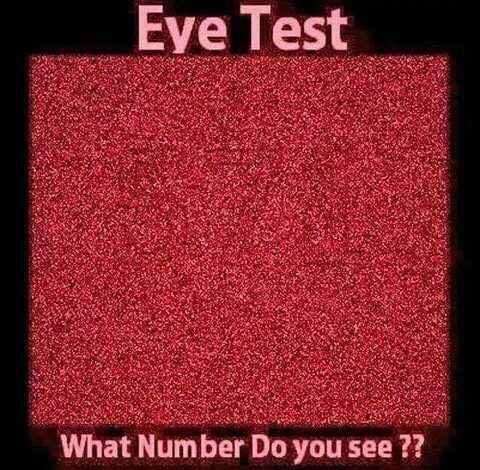
ADVERTISEMENT
Understanding Color Blindness and Vision Tests
The image you’ve shared appears to be an “Eye Test” that challenges the viewer to identify a number hidden within a field of color. These types of images are often used to test for color blindness, a condition where individuals have difficulty distinguishing certain colors, typically red and green.
What is Color Blindness?
Color blindness, or color vision deficiency, is a visual impairment that affects the ability to perceive colors accurately. The most common form is red-green color blindness, where individuals have trouble differentiating between shades of red and green. Less common are blue-yellow color blindness and complete color blindness (achromatopsia), where individuals see the world in shades of gray.
Color blindness occurs when the cone cells in the retina, responsible for detecting color, do not function correctly or are absent. This condition is usually inherited, but it can also result from certain eye diseases, damage to the retina, or aging.
How Does the Eye Test Work?
The image you provided likely contains a number that is visible to people with normal color vision but may be difficult or impossible to see for those with color blindness. This kind of test is similar to the Ishihara test, which uses a series of images with colored dots to form numbers or shapes. The Ishihara test is one of the most commonly used methods to diagnose red-green color blindness.
In the test image, individuals with normal vision should be able to see a distinct number among the colored dots or pixels, while those with certain types of color blindness may either see a different number or may not be able to see a number at all.
ADVERTISEMENT
The Importance of Vision Tests
Vision tests like these are important because they help identify color vision deficiencies early, allowing individuals to adapt their lifestyle and work environment accordingly. While color blindness cannot be cured, knowing about it can help in making informed decisions in areas where color differentiation is critical, such as choosing certain careers or ensuring that environments are designed to be accessible to all.
Conclusion
Color blindness tests serve as an essential tool in diagnosing and understanding vision deficiencies. If the number in the image is difficult for you to see, it might indicate a type of color blindness. If you suspect you have color vision deficiency, it’s advisable to consult with an eye care professional for a comprehensive examination. They can provide a definitive diagnosis and offer guidance on how to manage the condition effectively.




